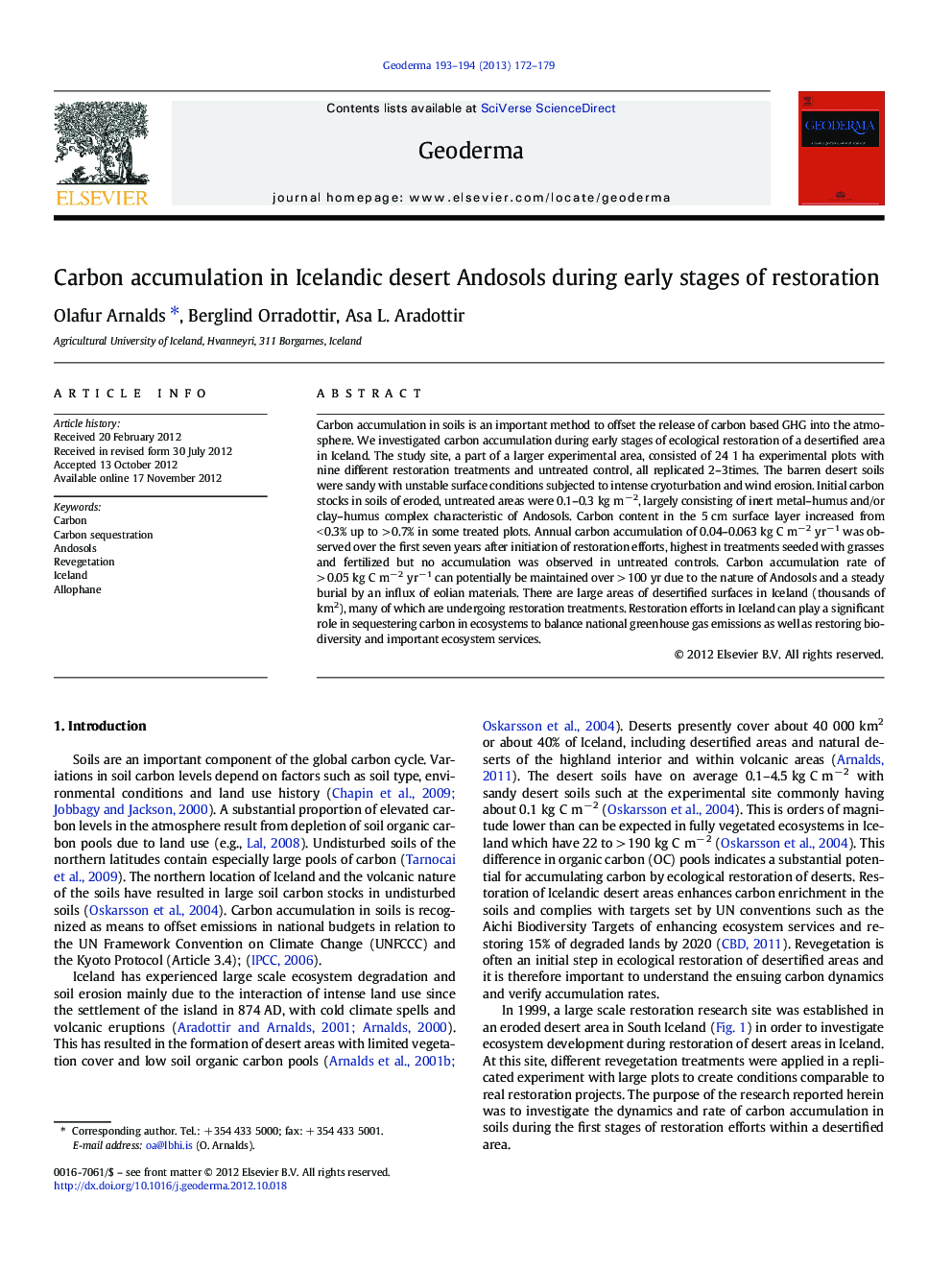| کد مقاله | کد نشریه | سال انتشار | مقاله انگلیسی | نسخه تمام متن |
|---|---|---|---|---|
| 4573681 | 1629490 | 2013 | 8 صفحه PDF | دانلود رایگان |

Carbon accumulation in soils is an important method to offset the release of carbon based GHG into the atmosphere. We investigated carbon accumulation during early stages of ecological restoration of a desertified area in Iceland. The study site, a part of a larger experimental area, consisted of 24 1 ha experimental plots with nine different restoration treatments and untreated control, all replicated 2–3times. The barren desert soils were sandy with unstable surface conditions subjected to intense cryoturbation and wind erosion. Initial carbon stocks in soils of eroded, untreated areas were 0.1–0.3 kg m− 2, largely consisting of inert metal–humus and/or clay–humus complex characteristic of Andosols. Carbon content in the 5 cm surface layer increased from < 0.3% up to > 0.7% in some treated plots. Annual carbon accumulation of 0.04–0.063 kg C m− 2 yr− 1 was observed over the first seven years after initiation of restoration efforts, highest in treatments seeded with grasses and fertilized but no accumulation was observed in untreated controls. Carbon accumulation rate of > 0.05 kg C m− 2 yr− 1 can potentially be maintained over > 100 yr due to the nature of Andosols and a steady burial by an influx of eolian materials. There are large areas of desertified surfaces in Iceland (thousands of km2), many of which are undergoing restoration treatments. Restoration efforts in Iceland can play a significant role in sequestering carbon in ecosystems to balance national greenhouse gas emissions as well as restoring biodiversity and important ecosystem services.
► We examined carbon accumulation in volcanic materials for 7 yr after restoration.
► Annual soil carbon increase was 0.04–0.063 kg m− 2.
► Allophane and metal humus complexes contributed to the rapid accumulation.
► This high rate of carbon sequestration can be maintained for > 100 yr.
Journal: Geoderma - Volumes 193–194, February 2013, Pages 172–179